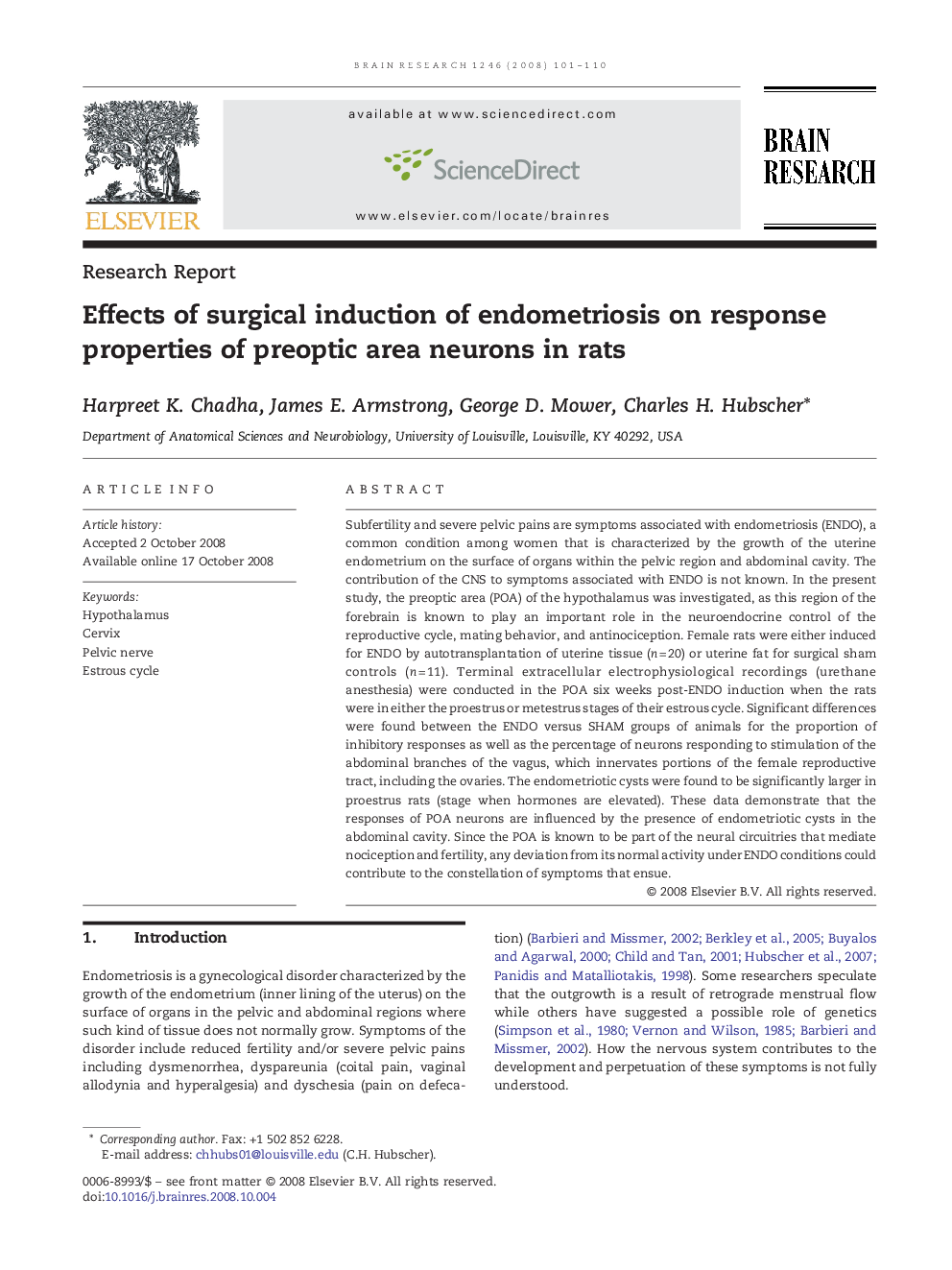| Article ID | Journal | Published Year | Pages | File Type |
|---|---|---|---|---|
| 4328847 | Brain Research | 2008 | 10 Pages |
Subfertility and severe pelvic pains are symptoms associated with endometriosis (ENDO), a common condition among women that is characterized by the growth of the uterine endometrium on the surface of organs within the pelvic region and abdominal cavity. The contribution of the CNS to symptoms associated with ENDO is not known. In the present study, the preoptic area (POA) of the hypothalamus was investigated, as this region of the forebrain is known to play an important role in the neuroendocrine control of the reproductive cycle, mating behavior, and antinociception. Female rats were either induced for ENDO by autotransplantation of uterine tissue (n = 20) or uterine fat for surgical sham controls (n = 11). Terminal extracellular electrophysiological recordings (urethane anesthesia) were conducted in the POA six weeks post-ENDO induction when the rats were in either the proestrus or metestrus stages of their estrous cycle. Significant differences were found between the ENDO versus SHAM groups of animals for the proportion of inhibitory responses as well as the percentage of neurons responding to stimulation of the abdominal branches of the vagus, which innervates portions of the female reproductive tract, including the ovaries. The endometriotic cysts were found to be significantly larger in proestrus rats (stage when hormones are elevated). These data demonstrate that the responses of POA neurons are influenced by the presence of endometriotic cysts in the abdominal cavity. Since the POA is known to be part of the neural circuitries that mediate nociception and fertility, any deviation from its normal activity under ENDO conditions could contribute to the constellation of symptoms that ensue.
